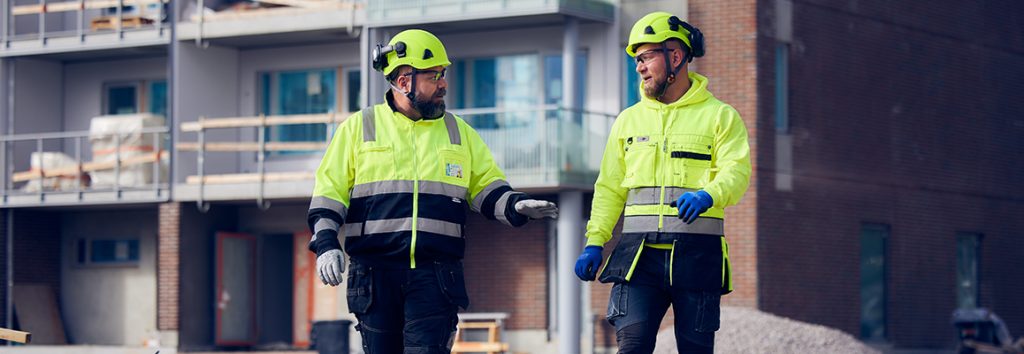In today’s fast-paced industrial and healthcare environments, maintaining safety from hazardous substances is a critical priority. Chemical exposure monitoring has emerged as an essential practice to safeguard workers, patients, and the environment. By employing healthcare EHS compliance tools, organizations can now manage chemical risks more effectively and ensure compliance with safety regulations. Real-time chemical exposure monitoring is transforming how industries approach workplace safety, offering immediate insights into potentially harmful exposures and enabling timely interventions.
The Importance of Chemical Exposure Monitoring
Chemical exposure monitoring plays a crucial role in protecting health and safety in environments where toxic substances are present. From manufacturing plants to healthcare facilities, employees are often at risk of inhaling or coming into contact with dangerous chemicals. Without proper monitoring, these exposures can go unnoticed, leading to acute health effects or chronic illnesses. Traditional methods of chemical exposure monitoring often involve delayed sampling and lab analysis, which can limit timely responses. However, advancements in technology have enabled real-time monitoring solutions, making it possible to track hazardous chemical levels continuously.
Real-time chemical exposure monitoring enhances the ability of safety professionals to detect and respond to dangerous conditions as they occur. This immediate feedback allows for rapid corrective actions, reducing the likelihood of overexposure. Furthermore, integrating these monitoring systems with healthcare EHS compliance tools ensures that organizations not only detect hazards but also document, analyze, and report compliance data efficiently. This comprehensive approach is vital in maintaining workplace safety standards and protecting employee well-being.
How Real-Time Chemical Exposure Monitoring Works
Real-time chemical exposure monitoring systems typically use advanced sensors and analytical technologies to detect various airborne contaminants, including volatile organic compounds (VOCs), gases, and particulates. These sensors provide continuous data streams that reflect the current concentration of chemicals in the environment. The data is often displayed on digital dashboards or mobile apps, enabling safety managers and workers to stay informed about exposure levels instantly.
The integration of real-time monitoring with healthcare EHS compliance tools facilitates a streamlined approach to safety management. These tools allow organizations to maintain records of chemical exposures, monitor trends over time, and ensure compliance with occupational safety regulations. By combining continuous monitoring data with robust compliance platforms, companies can quickly identify potential hazards and take appropriate measures to protect their workforce.
The Role of Healthcare EHS Compliance Tools in Chemical Safety
Healthcare EHS compliance tools have become indispensable in managing chemical exposure risks effectively. These platforms are designed to support the unique safety challenges faced by healthcare institutions, where the use of chemicals such as disinfectants, anesthetic gases, and laboratory reagents is common. With regulatory requirements constantly evolving, maintaining compliance can be complex. Healthcare EHS compliance tools provide organizations with a structured framework to track chemical inventories, exposure incidents, and employee health records.
When coupled with real-time chemical exposure monitoring, these compliance tools offer a holistic safety solution. They help healthcare providers not only monitor chemical hazards in real time but also ensure that all exposure data is accurately logged and analyzed for compliance reporting. This dual approach improves transparency, accountability, and ultimately worker safety in environments where chemical exposure risks are high.

Benefits of Implementing Real-Time Chemical Exposure Monitoring
Organizations that adopt real-time chemical exposure monitoring benefit in multiple ways. The foremost advantage is enhanced worker safety. By receiving immediate alerts when chemical concentrations exceed safe thresholds, employees can take prompt protective actions such as evacuating the area or donning appropriate personal protective equipment. This capability significantly reduces the chances of acute poisoning or long-term health complications.
Additionally, real-time chemical exposure monitoring supports regulatory compliance. Many occupational safety regulations mandate routine monitoring and documentation of chemical exposures. Healthcare EHS compliance tools paired with real-time monitoring systems simplify adherence to these regulations by automating data collection and reporting processes. This reduces administrative burdens and minimizes the risk of non-compliance penalties.
Moreover, real-time monitoring data can inform risk assessments and workplace design improvements. Continuous exposure data helps identify high-risk areas and activities, enabling safety professionals to implement targeted interventions. Whether it’s upgrading ventilation systems, modifying work procedures, or enhancing employee training, the insights gained through chemical exposure monitoring drive smarter safety decisions.
Overcoming Challenges with Chemical Exposure Monitoring
While the benefits of real-time chemical exposure monitoring are clear, implementing these systems can present challenges. The complexity of chemical environments and the diversity of hazardous substances require versatile sensors capable of detecting multiple agents accurately. Healthcare EHS compliance tools must be adaptable and user-friendly to integrate seamlessly into existing safety protocols.
Data management is another critical consideration. Real-time monitoring generates large volumes of data, which must be efficiently processed, stored, and analyzed. Healthcare EHS compliance tools are designed to handle this data influx, providing actionable insights rather than overwhelming safety teams with raw information.
Furthermore, ongoing training and awareness are essential to maximize the effectiveness of chemical exposure monitoring programs. Employees must understand the importance of monitoring, how to interpret alerts, and the steps to take when exposure risks are detected. Combining technology with comprehensive safety culture initiatives ensures that monitoring systems deliver their full protective potential.
The Future of Chemical Exposure Monitoring in Healthcare and Industry
Looking ahead, the integration of real-time chemical exposure monitoring with healthcare EHS compliance tools is expected to become even more sophisticated. Advances in sensor technology, artificial intelligence, and data analytics will enhance the accuracy and predictive capabilities of monitoring systems. This evolution will empower organizations to not only respond to current hazards but also anticipate and mitigate future risks.
In healthcare settings, where patient safety and staff well-being are paramount, real-time chemical exposure monitoring offers a critical layer of protection. Healthcare EHS compliance tools will continue to evolve to support more comprehensive chemical management, integrating exposure data with other environmental and occupational health metrics.
Ultimately, staying safe in environments with chemical hazards depends on proactive monitoring and effective compliance management. By investing in real-time chemical exposure monitoring and leveraging healthcare EHS compliance tools, organizations can create safer workplaces, protect their most valuable assets—their people—and meet regulatory requirements with confidence.



